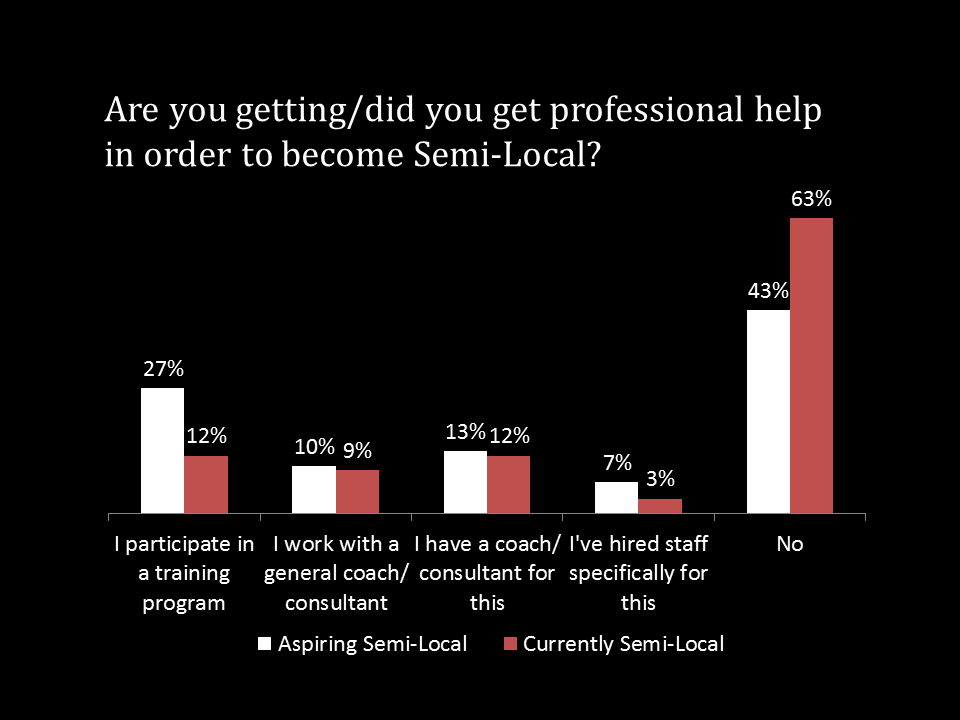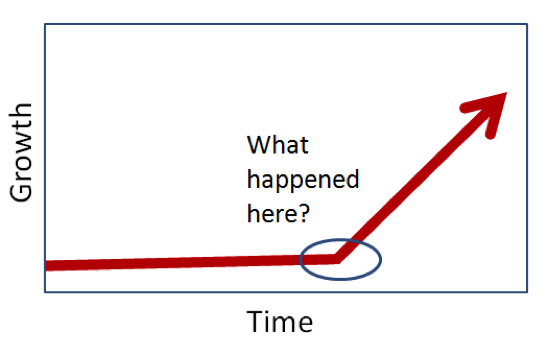“What Bloggers Can Learn From Musicians” plus 1 more |  |
| What Bloggers Can Learn From Musicians Posted: 30 Oct 2011 01:09 PM PDT This guest post is by Jamie Northrup of jamienorthrup.com. A lot of the keys to being a successful musician are the same as being a successful blogger. Some of the similarities between these two professionals are that both write a lot, both present their work to an audience, and both can choose to do it for the art or for the money—or even both, like I do! The path to the topThere are currently three ways to become a successful money-making musician: 1. Join a music label or record companyThis is the oldest and most common way to becoming a successful artist. You can either push your demo or get discovered. Either way, you may not have as much control over your destiny, but you usually have some help getting to the top—or as close as possible.2. Do it yourselfThis isn't the easiest way, but it is probably the most rewarding. You have to work hard, but you get the control over what you do as an artist. One artist that comes to mind is Master P, who basically sold CDs out of the trunk of his car. He made millions like that, and later founded his own record company. He was worth over $400 million, and was on Forbes richest people under 40 list in the late 1990s. 3. Win a contestThis isn't new—it's been around since television has been around with shows like Star Search—but it seems to have exploded in recent years with shows like American Idol, X-Factor, and others. It's a great way to become a star and showcase your talent, but it can be hard to even get into the early stages of the competition. When you look at these options, you can see that attaining blogging success isn’t much different. You can join a "tribe," do it yourself, or enter blogging contests—but chances are, like me, you fall in the second group of people trying to do it on their own. Some of the techniques I use to be a successful blogger are similar to the ways DIY musicians gain success. Think of a song as a blog post, and an album as a blog. What successful bloggers and musicians shareThere are several techniques that work for both musicians and bloggers. The first is guest posting. The same thing happens in music: guest posting is pretty much the same as one artist featuring another one in one of their songs. It's a great way for either the musician or the blogger to establish themselves with a new audience, and get their name out there. The second technique, which is quite similar to the first, is remixing a song. Lil Wayne is famous for doing this on his mixtapes (unreleased or non-mainstream albums). This artist would take popular songs and remake them with his own words. Bloggers do this quite often as well—I actually try and do it once a month. My latest attempt was "remixing" a popular post from Think Traffic. The final link I like to draw between successful bloggers and successful musicians is that both write about what is hot—the trends. There's no surprise that when you blog or sing about what’s in the news, you’ll get recognition. Sometimes it's good, sometimes it's not, but apparently there is no such thing as bad publicity. Choosing to blog on your own isn't the easiest way to earn blogging success, but if you don't quit, you will succeed—just like self-made musicians. Do you see any other ways that bloggers are like musicians? This post was written by Jamie Northrup, a web consultant based in Montreal, Canada. Jamie runs several different blogs, and tweets using his web handle DeuceGroup. Originally at: Blog Tips at ProBlogger What Bloggers Can Learn From Musicians |
| Want to Make Money Online? Then Stop Reading and Get Moving! Posted: 30 Oct 2011 07:06 AM PDT This guest post is by Danny Iny of Firepole Marketing. A few weeks ago, I wrote a post here at problogger.net about how Firepole Marketing makes money. I explained that even though we're less than a year old, we've already made over $20,000, and that over half of that came from offline sources. We wanted to know how other bloggers make their money. Is it all online, or do they make their money offline as well? In other words, we wanted to know if they were Semi-Local. In October 2011, we surveyed 153 people; 107 who were already Semi-Local, and 46 who aspired to be. We asked a number of questions to find out what was really involved in becoming and being Semi-Local. Here are the highlights of what we learned. How many hours per week do you work?The first major finding was about how many hours per week people who were already Semi-Local (current SLs) spent working, versus how many hours per week people who aspired to be Semi-Local (aspiring SLs) spent working: Notice the discrepancies on either end of the spectrum: 31% of aspiring SLs work less than 20 hours per week, versus only 12% of current SLs. On the other hand, only 15% of aspiring SLs work 50+ hours per week, versus 28% of current SLs. Do you think people are idealizing the Semi-Local life, and expecting it to be a lot easier than it really is? What is your take-home income?Another interesting finding was about take-home income: There's definitely more money in being Semi-Local: 39% of current SLs make over $60K/year, versus only 22% of aspiring SLs. The majority (60%) of aspiring SLs make between $20K and $60K/year, whereas the majority (60%) of current SLs make between $40K and $200K/year—a big difference! There's some interesting data at the edges of the spectrum, though. 25% of current SLs make under $20K/year, versus only 18% of aspiring SLs, and only 2% of current SLs make over $200K/year, versus 4% of aspiring SLs. How does one become Semi-Local?One of the most interesting findings (to me, at least) was about how people actually go about becoming Semi-Local: The majority (71%) of aspiring SLs expect to achieve Semi-Local status by creating an offer that is substantially different from their current offer. In contrast, the majority (60%) of current SLs did it by selling exactly the same offer to a new market. The lesson here is pretty clear—put away all of the shiny objects, and look for new customers to buy what you've already got! How long does it take to launch?This is one of the top questions for anyone who's thinking about becoming Semi-Local: how long does it take to launch? There are really two "categories" of results here: the first category is "under 100 hours," and the second category is "100+ hours." Seeing the results in these two categories, we can draw a couple of interesting conclusions:
Do you need professional help?That's the question that we should all be asking before opening up our wallets for the latest training program on blogging and online business: This is the most striking finding: 63% of current SLs said "no," versus only 43% of aspiring SLs. The message here is very clear: you don't need training, you just need to get off your butt and start working! Do you want to see more of the numbers? Review more of the answers that the respondents gave us? Then download the full report—it's free! Danny Iny (@DannyIny) is an author, strategist, serial entrepreneur, expert marketer, and the Freddy Krueger of Blogging. Together with Guy Kawasaki, Brian Clark, Mitch Joel, he wrote the book on how to build an engaged audience from scratch. Originally at: Blog Tips at ProBlogger Want to Make Money Online? Then Stop Reading and Get Moving! |
| You are subscribed to email updates from ProBlogger Blog Tips To stop receiving these emails, you may unsubscribe now. | Email delivery powered by Google |
| Google Inc., 20 West Kinzie, Chicago IL USA 60610 | |
















.jpg)